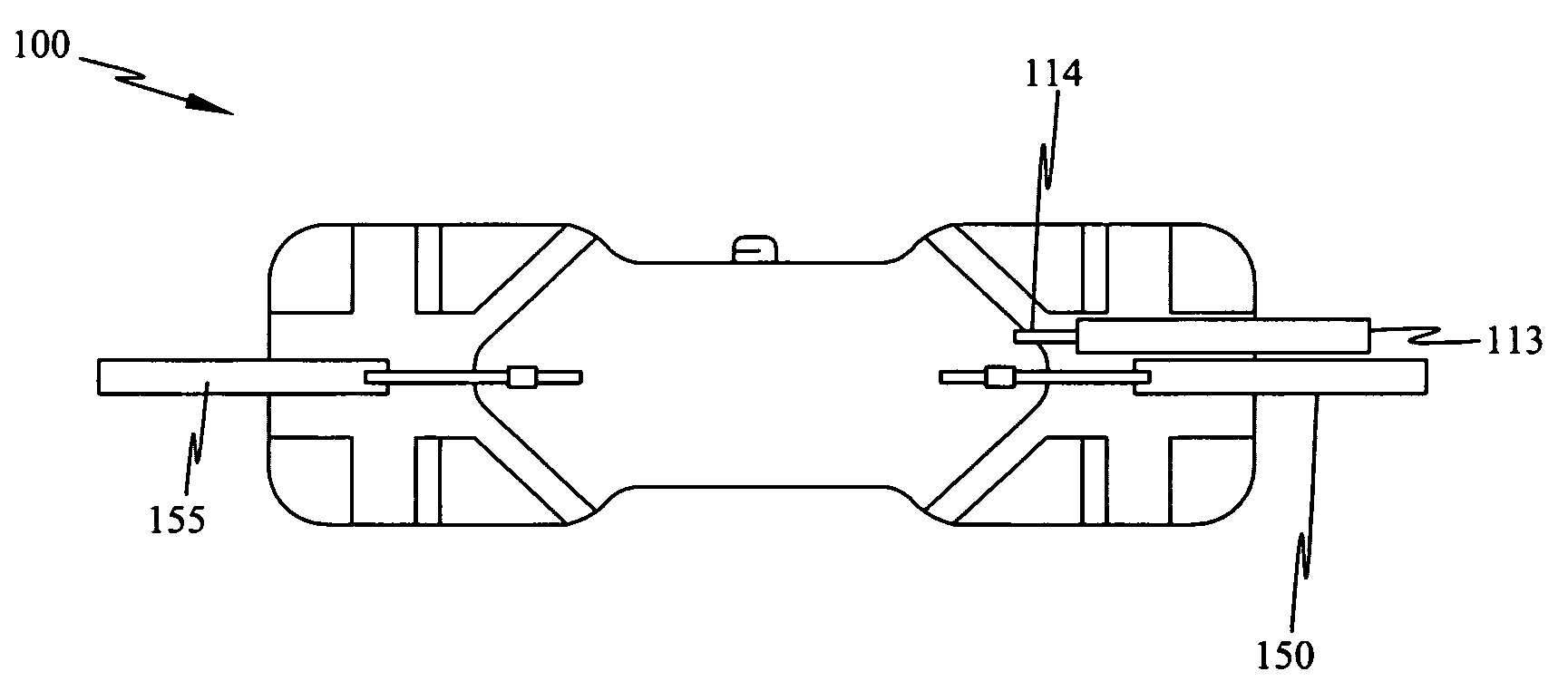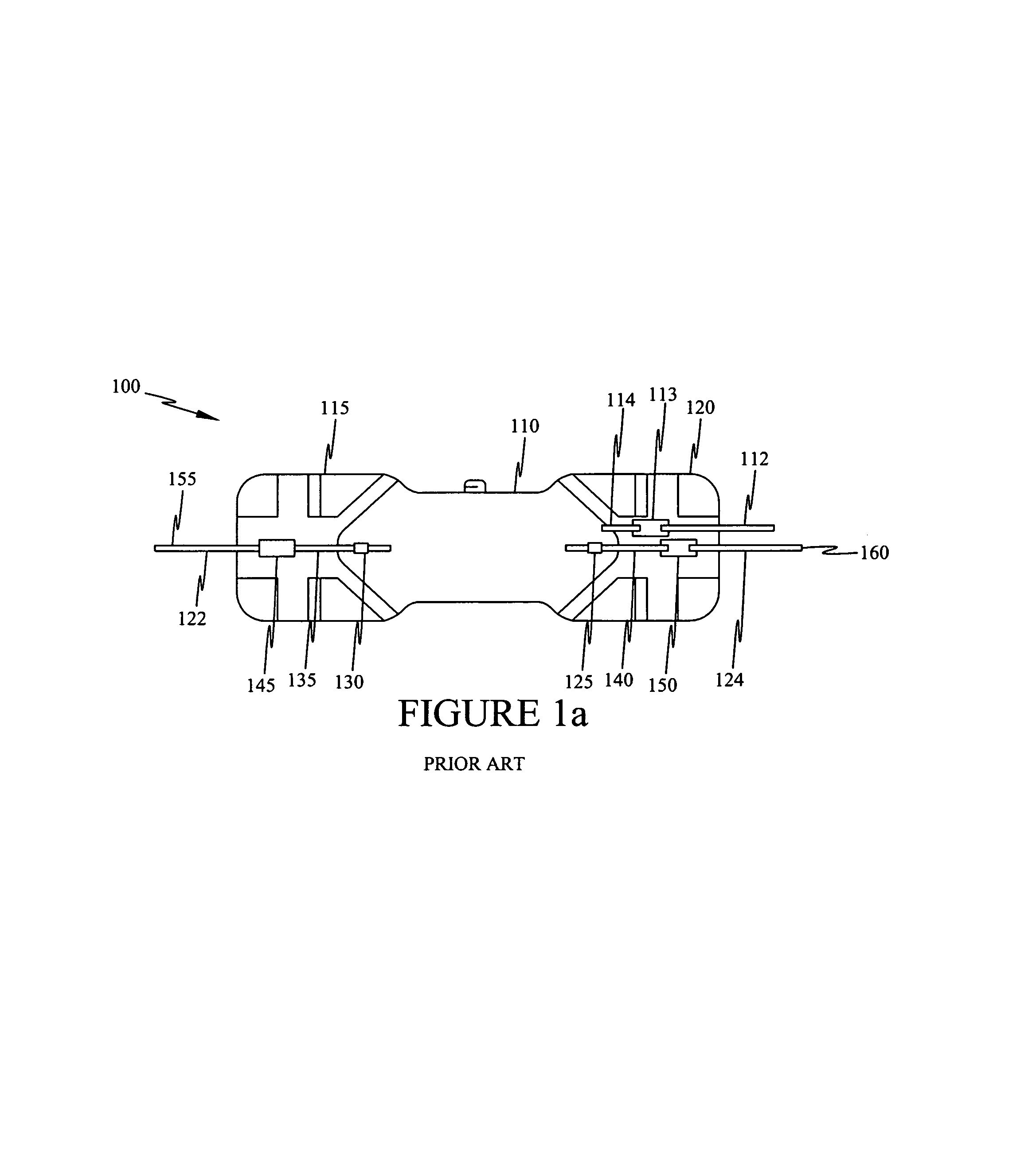Oxidation-protected metallic foil and method
a technology of oxidation-protected metallic foil and metal foil, which is applied in the manufacture of electrode systems, discharge tube luminescnet screens, coupling device connections, etc., can solve the problems of lamp failure, substantial reduction in the useful life of lamps, and foil corrosion
- Summary
- Abstract
- Description
- Claims
- Application Information
AI Technical Summary
Problems solved by technology
Method used
Image
Examples
example 1
[0046]Pieces of molybdenum foil were coated with silica glass employing various coating methods. In one application, the ribbon was dipped into a bath of colloidal silica (20% SiO2 in methanol; 300 nm and long chains of 5–20 nm) provided by Nissan Chemical Co. (product no. MA-ST-UP) and pulled into air at a rate of several millimeters per second. The ribbon was then heated to 1600–1650° C. for a period of one second. This caused the small silica particles to be fused into a thin, continuous film of glass which was substantially impervious to oxidation. As the foil cooled, the metallic portion contracted more than the silica coating thereby placing the glassy film under lateral compression. The lateral compression of the film enhances the film's resistance to cracking and other surface damages.
[0047]Similar experiments were conducted in which the heating duration was extended to 4 seconds and it was learned that extended heating can cause brittleness in the foil. It is noted that the...
example 2
[0048]A thin film of silica was applied to a molybdenum foil to form an oxidation-protective film. The foil was dip-coated by immersing the foil in a bath and withdrawing it from the bath at a rate of 1 inch / sec.
[0049]The bath contained:
[0050]
ST-OUP (from Nissan Chemical Corp.)3.0 gmDistilled Water2.0 gmConcentrated aqueous ammonia 3 drops (ca. 0.15 mL)PVP (1% solution in water)3.0 gm
[0051]The ingredients were added in the above-recited order under gentle swirling. The foil was then coated with the solution, air-dried and heated to about 1600° C. for about one second in argon atmosphere.
example 3
[0052]The following procedure was conducted to coat a molybdenum foil with a film of silica. The molybdenum foil was dip-coated by immersing the foil in a bath and withdrawing the foil from the bath at a rate of about 1 inch / sec.
[0053]The bath contained:
[0054]
ST-OUP (from Nissan Chemical Co.)3.0 gmDistilled water2.0 gmConcentrated aqueous ammonia 3 drops (ca. 0.15 mL)PVP (1% solution in water)3.0 gm
[0055]The ingredients were added in the above order under a gentle swirl. A positive electrical potential was applied to the foil during the immersion and withdrawal of the foil from the bath (e.g., 3 volts, relative to a platinum wire immersed in the bath). This process resulted in a reduction of the number of coating irregularities on the thin edges of the foil. After the foil was coated, it was air-dried and then heated to about 1600° C. in argon atmosphere for about 1 second. The foil was found to be covered by a even layer of silica.
PUM
| Property | Measurement | Unit |
|---|---|---|
| temperature | aaaaa | aaaaa |
| temperature | aaaaa | aaaaa |
| temperature | aaaaa | aaaaa |
Abstract
Description
Claims
Application Information
 Login to View More
Login to View More - R&D
- Intellectual Property
- Life Sciences
- Materials
- Tech Scout
- Unparalleled Data Quality
- Higher Quality Content
- 60% Fewer Hallucinations
Browse by: Latest US Patents, China's latest patents, Technical Efficacy Thesaurus, Application Domain, Technology Topic, Popular Technical Reports.
© 2025 PatSnap. All rights reserved.Legal|Privacy policy|Modern Slavery Act Transparency Statement|Sitemap|About US| Contact US: help@patsnap.com



